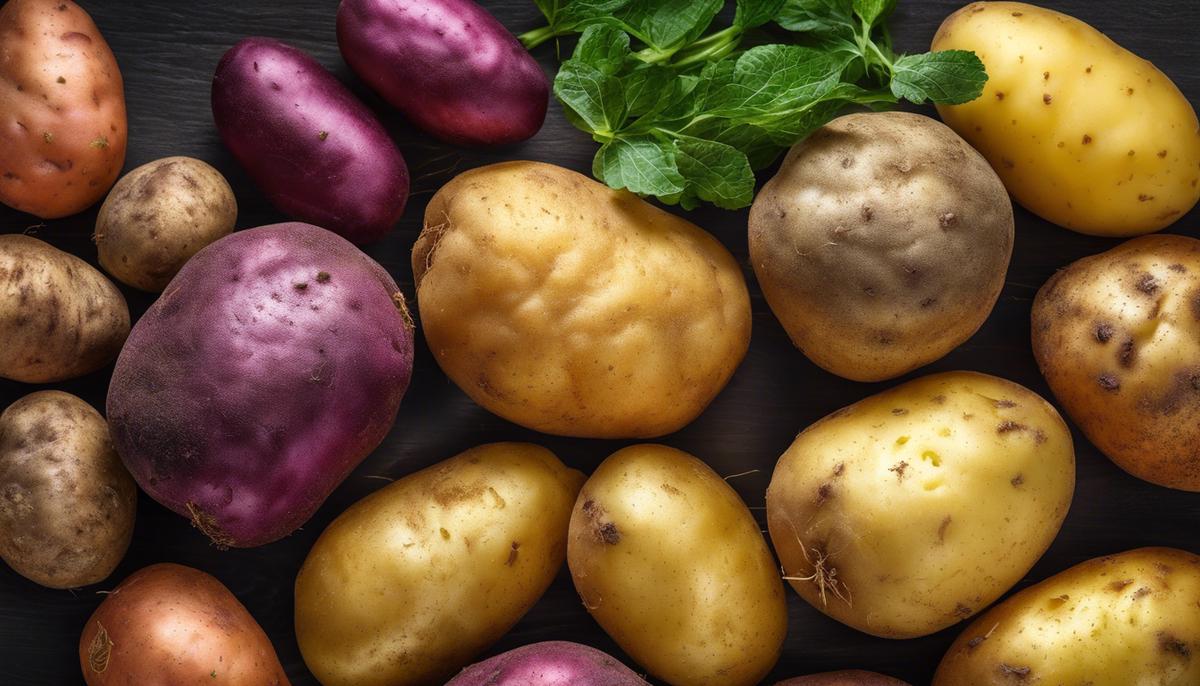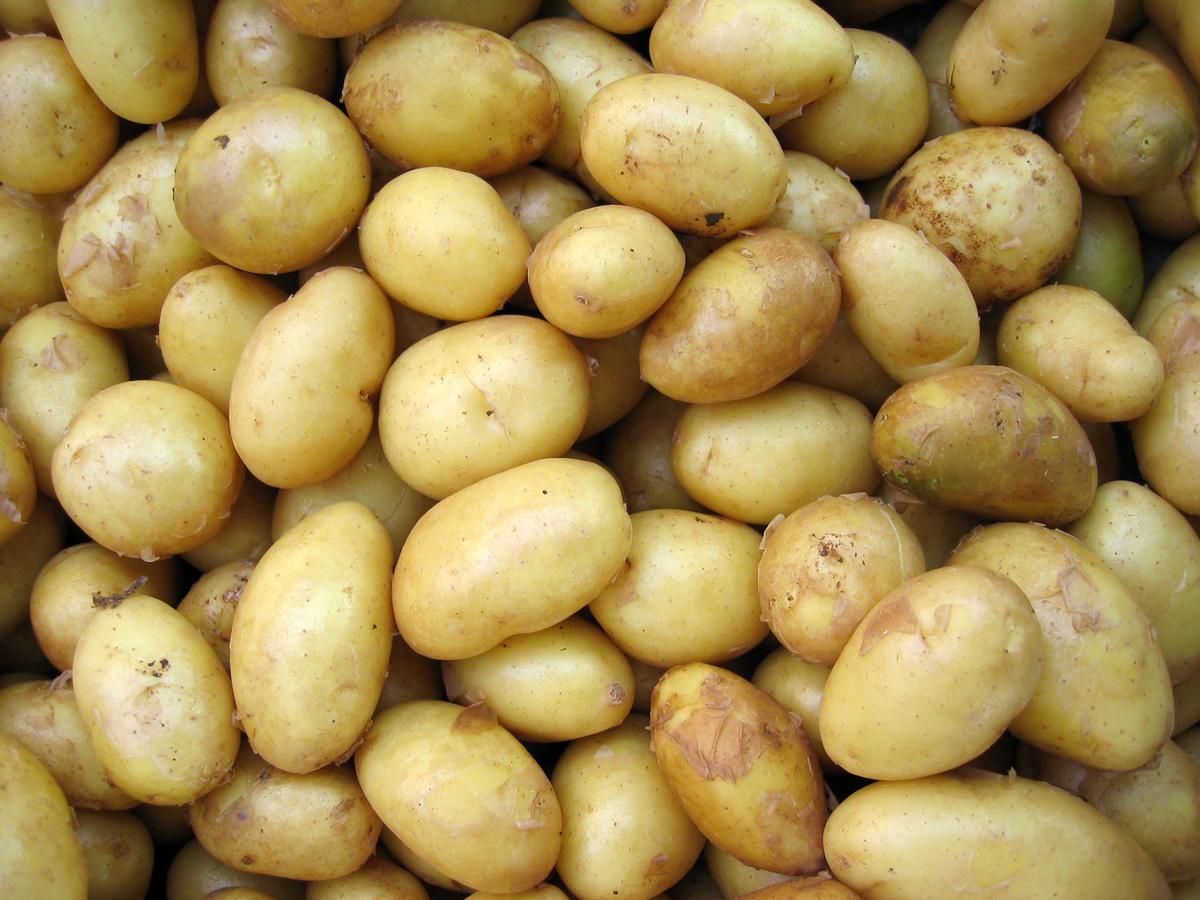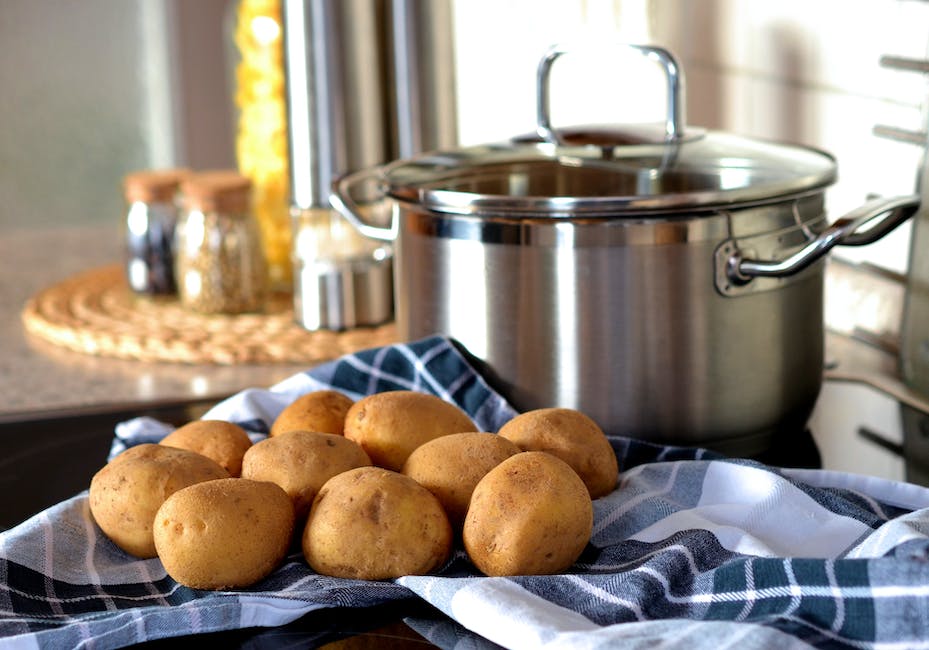Potato Planting Season: Mastering the Art

Unlocking the secrets of successful potato farming is like solving a puzzle with many pieces – each one significant in cultivating a bountiful yield. This involves understanding the intricacies of different potato species, each boasting unique sowing seasons and growth characteristics tailored to different climates. Appreciating the reciprocal relationship between potatoes and their environment is paramount as the changing seasons and soil compositions profoundly affect the growth process. Discovering the art of strategic timing, the best periods to plant potatoes considering weather conditions, and potato varieties can exponentially increase your yield and redefine your potato-farming game.
Understanding Potato Species Varieties
Diving Deep into the Diverse Depths of Potatodom: Understanding the Various Varieties and Their Planting Times!
Potatoes – an enthusiastic gardener’s staple, the earth’s delightful yield, and frankly, just a versatile delectable of the culinary world! Many ignore the diversity of the humble spud, but the truth, sweet potato enthusiasts, is that there’s a thrilling world of potato varietals just waiting to be understood and planted. Each comes with its own special set of characteristics, including different planting times. So let’s dig in!
Firstly, it’s essential to acknowledge the main categories of potatoes: early, mid, and late season varieties. The distinctions refer to the length of time they take to mature – an invaluable tool in planning the perfect potato planting schedule.
Early-season potatoes, as the name suggests, mature quickly, usually within 75 to 90 days. Be prepared to plunge potato plants like ‘Irish Cobbler’, ‘Caribe’, and ‘Norland’ into the soil in early spring – right after the danger of frost has passed. These early bloomers can offer an incredible yield and be harvested right at the start of summer.
Midseason potatoes are up next, typically ready for harvest within 95 to 110 days of planting. Gardeners can sow these varieties such as ‘Yukon Gold’, ‘Kennebec’, or ‘Purple Viking’ about two weeks after the early-season varieties, extending the harvest period.
Let’s not forget the late-season potatoes, commanding a longer growing period of 110 to 135 days. The focus here is on types like ‘Katahdin’, ‘Elba’, and ‘Butte’. The extended maturing timeframe helps these potatoes store exceptionally well, yielding a substantial autumn harvest.
Now, let’s drill down a little more on the differences between these varied varietals:
- ‘Irish Cobbler’: The naming comes from its rough, irregularly-mottled skin. It’s an early-season variety, perfect for boiling and mashing.
- ‘Caribe’: This purple-skinned, white-fleshed potato is noted for its adaptability to colder climates and notable disease resistance.
- ‘Norland’: Sporting a striking red skin contrasted by white flesh, this is a versatile early-season variety with robust resistance to scab.
- ‘Yukon Gold’: This mid-season, yellow-fleshed type stands out for its buttery taste and excellent performance in mashed or grilled dishes.
- ‘Kennebec’: A high-yielding, large, white tuber. This midseason potato boasts amazing storage quality.
- ‘Purple Viking’: With its pleasant purple skin and white flesh, this midseason potato offers a sweet, creamy flavor, perfect for baking, boiling, or frying.
- ‘Katahdin’: A dependable late-season varietal, it yields uniform, bright white tubers prized for their flavor and storage qualities.
- ‘Elba’: This late-season variety comes with high resistance to disease and offers an amazing yield of round, white tubers, best suited for boiling.
- ‘Butte’: This russet-skinned, late-season tuber is the go-to choice for baking enthusiasts.
Having a clear understanding of potato varieties and optimal planting times contributes to a successful, staggered potato harvest. Remember, the joy of growing potatoes lies not only in the delicious fruits of your labor but in the diverse range of varieties awaiting your discovery. So, don your gardening gloves, engage that green thumb, and start your incredible journey into the magnificent world of potatoes. Now that’s what you call a spud-tacular gardening adventure!

Insight into Climate & Soil Conditions
Exploring The Wonderful World of Potato Varieties!
To every potato gardener’s delight, there lies a multitude of potato types to choose from, all offering a spectrum of unique flavors, colors, and textures. But choosing just the right variety to plant, nurture, and harvest requires a deep dive into the vast realm of the potato world.
Say hello to one particular group of delightful potatoes: the fingerlings. These long, slender, small-sized potatoes are truly a gourmet’s treat. With their firm, waxy textures and rich flavors, they’re fantastic for roasting, boiling, and steaming, or to be the star on a fancy appetizer platter. Varieties like the Russian Banana and French Fingerling hold an esteemed place in this category.
Then, there are all-season-friendly potatoes, and Yukon Gold stands tall as the poster child. Loved by gardeners and chefs alike, this potato boasts a unique yellow flesh that’s buttery, creamy, and just the right kind of perfect for a crunchy baked potato dish or velvety smooth mashed potatoes.
The world of potato gardening isn’t just about the humble spuds we eat, though. Let’s not forget about the ornamental potato, potato vine or Solanum jasminoides! This vibrant plant puts forth beautiful white to lavender flowers, making it a fabulous addition to any garden. But remember, while massively pleasing to the eye, they’re not suitable for eating.
When it’s time to head out to the garden and get soil on those gloves, remember to consider crop rotation. Plant potatoes where legumes like peas or beans grew previously. This helps ensure the soil isn’t harboring harmful diseases or pests that could affect the potato crop.
Then it’s on to the magical moment of planting. Opt for a well-drained, sunny location, bury the potato tubers about 2-3 inches deep and space them at approximately 12 inches apart. And voila! You’ve planted the seeds of a thriving potato garden.
Keen on experimentation? Why not try a green manure crop before planting? Plant fast-growing crops like beans, peas, or clover. Then till them under when it’s time to plant potatoes. This way, you’re helping build up organic matter in the soil, aiding in moisture retention and nutrient availability.
Moreover, covering the ground with straw or compost can work wonders for the crop yield. Known as mulching, this practice helps conserve moisture, manage weeds, and protect your precious potatoes from scorching sun rays.
Unearth the magic of potato gardening by taking the time to understand each variety, learning what makes each unique, and where they’ll thrive best. With a bit of patience, some dedicated care, and lots of love, your potato plantation will be brimming with wonderful, top-notch spuds in no time. And remember, every small step towards a healthier garden helps build a healthier, happier planet! Dig in, fellow potato enthusiasts, and let the potato gardening journey continue!

Strategic Timing for Planting Potatoes
To determine the best time for planting potatoes, there are a few key factors to consider. The ideal time depends significantly on the local climate as well as the specific requirements of the potato variety to be planted. In general, however, potatoes are a cool-season crop which means they perform best in cooler climates and temperatures.
The typical guideline for planting potatoes is to get them in the ground about two weeks before the last expected spring frost. This timing is crucial because potatoes require a significant amount of time to grow before the heat of summer arrives. Planting too early or too late could expose the young plants to adverse weather conditions, potentially damaging the crop.
When preparing for potato planting season, another important aspect is the condition of the soil. Potatoes prefer a moderately acidic pH, between 5.0 and 7.0. So, before planting, it may be beneficial to conduct a soil test to ensure the perfect environment for growth. Ideal soil, aside from having the correct pH, is loose and drains well. This allows the potato tubers to expand and grow without significant restriction.
Another aspect to consider is the daylight hours. Potatoes need about six hours of daylight to grow effectively, so be sure to plant them in an area that gets ample sunlight.
Now that we have covered the logistical aspects of when to plant potatoes, let’s delve into some practical tips. Start by digging a trench about 8 inches deep, placing the seed potatoes every 12 inches. Cover them with 3 inches of soil and once the shoots reach the same height, heap more soil around the stems leaving just the tops exposed.
These heaping mounds serve a dual purpose. First, they protect the potato tubers from sunlight, which could otherwise cause them to develop a toxic compound known as solanine. Second, they provide extra room for the tubers to grow and produce a higher yield.
Lasty, be patient. Potatoes are certainly not the fastest growing plant, and they require time to develop into the delicious, versatile food we all enjoy.
As always, remember that it’s not about perfection, but about the joy of cultivating your own food. Experiment, learn and, above all, have fun with your potato gardening journey!
Keep in mind, several factors can affect your potato yield, including pest and disease control, adequate watering and fertilizer use. Consulting with an experienced gardener or your local extension office can provide additional guidance.

As we delve into appreciating potato cultivation, it’s clear that understanding the different potato species, soil conditions, and planting timing is key to successful farming. Enhanced knowledge on how to navigate through the seasons, adjust according to soil compositions, and strategically time your planting can revolutionize the way you farm. Igniting this connection with the earth and its seasons, we can transform our gardens into a hub of thriving potato plants, improving the quantity and quality of the yield, and potentially inspiring a new generation of farmers in the process.



